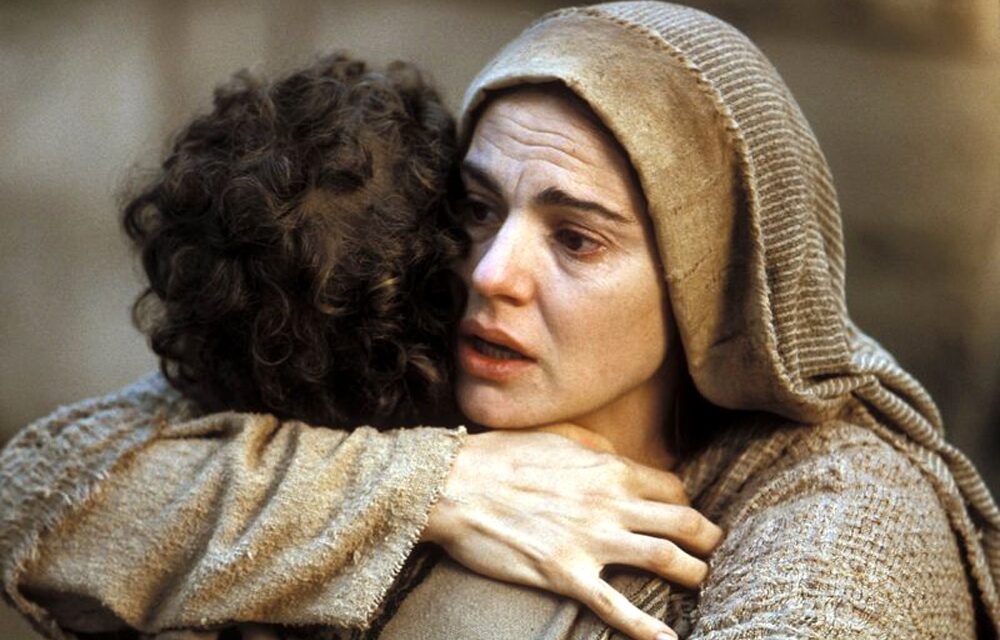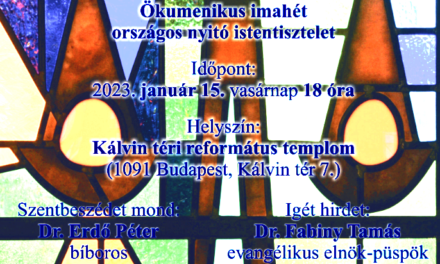Who is this woman who grows old without a sign of sin and awaits the day to join her son in heavenly glory? We don't know him, but we guess. He looks like us.
Who did the Virgin Mary resemble in body and soul on the day of her Assumption? Mary outlived Jesus by several years. John took him in. He probably entrusted some of his memories to Luke, who tells the stories of Jesus' childhood. He may have ended his earthly life in Ephesus, if certain traditions are to be believed. In any case, Mária understood her old age. The Dominican monk Jacques de Voragine (1228-1298) tells the apocryphal story in the Golden Legend, which he calls the "second annunciation": the archangel Gabriel is said to have come to tell Mary that he would soon leave for heaven.
How did Mary age?
The painter Duccio depicted the scene in a triptych as part of his famous Maesta. On the first panel, we see an angel appearing in front of Mary with elderly features, holding a palm branch symbolizing eternal life. On the second tablet, Mary announces to John that he will be taken to heaven. In the third panel, the Virgin bids farewell to the apostles gathered around her.
The Gospel is narrower than that. We know nothing about the end of the Virgin Mary's stay on earth. Through a set of written traces, oral traditions and theological considerations, the Church came to the conclusion that the Virgin Mary ascended to heaven in body and soul, which was proclaimed as a dogma in 1950. What they have always believed is now a truth of faith to which all Christians must adhere.
It is a fact that Mária is old. Yet the iconography almost always depicts her as young, even when they want to show her appearance at the wedding in Cana or even her presence at Golgotha: she is not depicted as an old woman, but rather as a woman of mature age. On the body and face of the always young and virgin Mary, a certain restraint can be seen in the presentation of the ravages of time. Maybe they were trying to cover up Mária's aging? No, it is rather a kind of theological thought process: Mary did not know sin, since she was protected from it from the moment of her conception. However, sin ages the soul and leads everyone to death. So Mary did not suffer the ordinary, normal effects of aging. This argument is not bad, perhaps too abstract to be really convincing. The truth is that we don't know if Mary aged in the usual way. How can he be portrayed then?
Without Jesus and Joseph
On the other hand, we know that Mary survived Joseph and Jesus. The more interesting question is to find out how he coped with the loss of both of them. József's absence must have been painful, and the years of widowhood were very bitter. Many women experience this. But how could he experience the loss of Jesus? Whatever the circumstances, the death of a child in front of its parents is subversive and unbearable! What about the death of a boy who is God? Mary received the testimony of the apostles, she knew from her faith that Jesus was resurrected and lives forever. No doubt he instinctively perceives that he will join him in heavenly glory. But waiting for that, I wonder what was going on in his heart?
We do not know this aging Mary, who is waiting for the day when she will join her son in heavenly glory. But we guess. He looks like us. One glance is enough to understand it. What does Mary do? He keeps the words of Jesus and meditates on them in his heart. What does Mary do? He talks to Jesus' disciples about what he saw and heard from him. What does Mary do? He stands in the middle of the Church, from which he receives everything, but to which he also gives everything that he is. What does Mary do? He receives divine life and grace abundantly through the sacraments left behind by his son. What does Mary do? He lives in the presence of the clear shadow of his Son and God, Jesus, who is by his side every moment and reminds him of his love. Mária remembers and hopes. And if he grows old, it is only external, because his heart is always young, renewed every moment by grace. In the middle of everything, Mária takes care of her neighbors, prepares food, goes to the spring, and does the small activities necessary to make a living.
At the moment of our death
Meanwhile, Mary experiences the common Christian life in this world. Between memories and hope, he lives in the mysterious presence of Christ, waiting to join him once and for all in the blissful eternity of heaven. After Jesus, he was the only one who deserved to go to heaven in body and soul. But on the day of the Last Judgment, we too will be admitted with glorified soul and body to the wedding feast of the Lamb. And at the moment of our death, Mary, who lived through this transition in a unique way, will be there to accompany us, as we ask her at the end of each Hail.
The moment of our death will come. Because we grow old marked by sin. But we will be resurrected in glory if, like St. John, we accept Mary. Because then, together with him, we meditate on God's Word night and day, and we live in the mysterious presence of Christ, in the midst of the Church. Under these circumstances, there is nothing to fear. Under the mantle of the Virgin Mary, there is room for all people. We may grow old there, but we remain young in God's heart before we are reborn to eternal life.
Translated by: Zoltán Bárdi
Source: Aleteia/zarandok.ma
Featured image: Port












